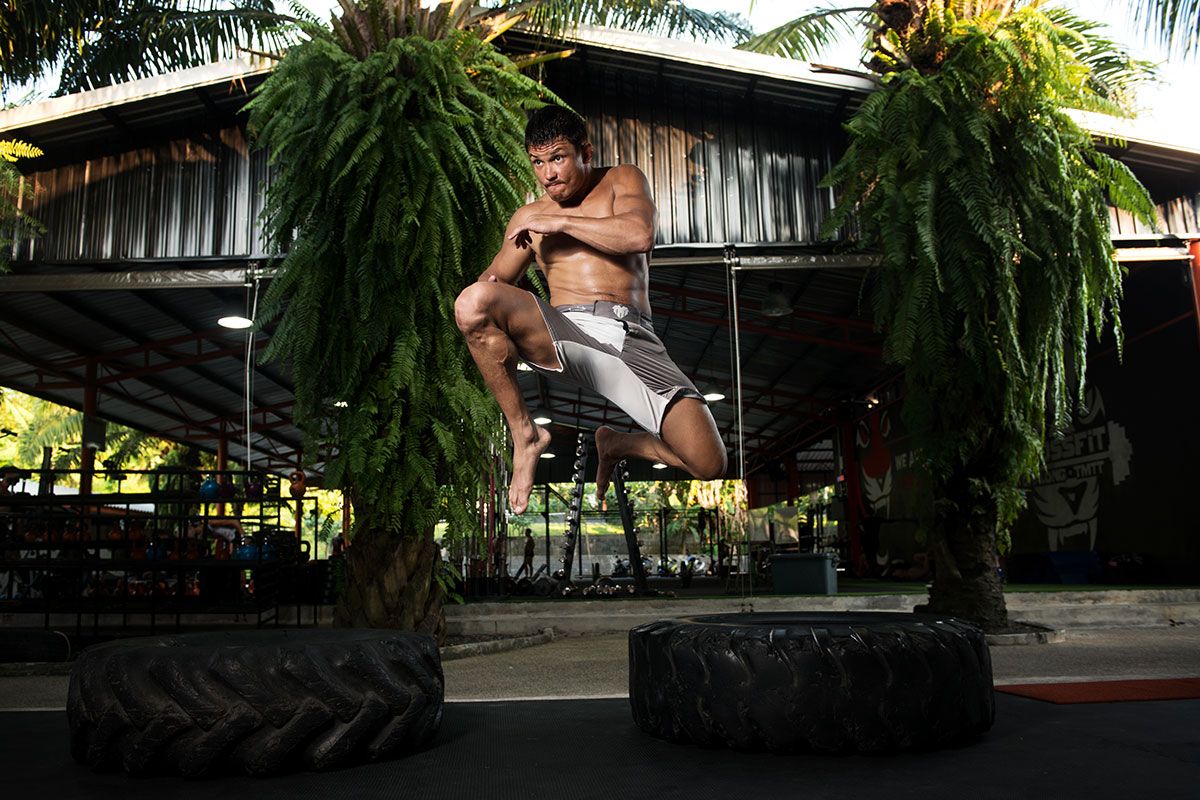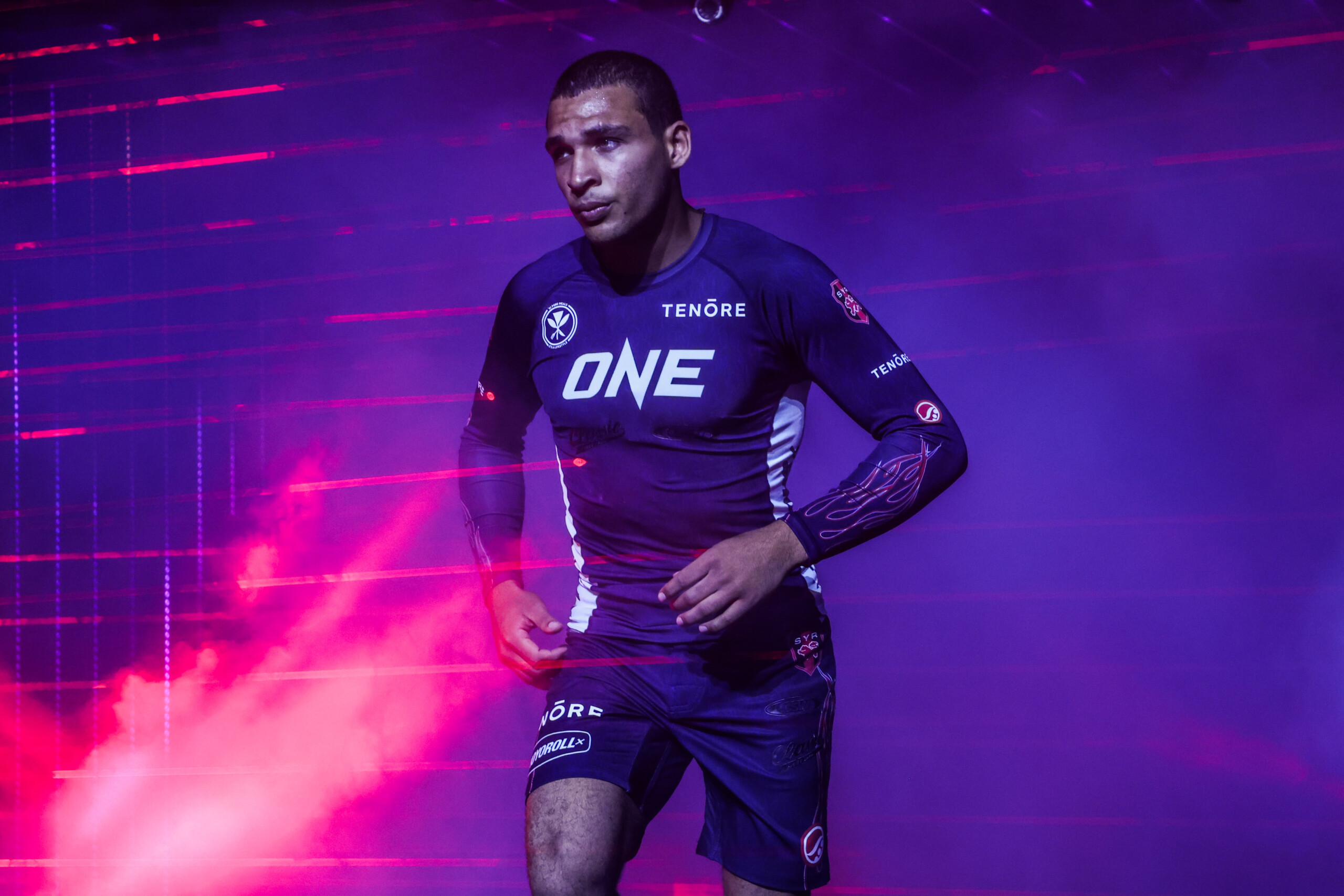Tiger Muay Thai’s Rise From Humble Gym To Global Juggernaut

Picture Thailand first, because that is where it all began.
Then, think of tropical beaches and rolling hilltops capped with a statue known as Big Buddha. That is Chalong, a sub-district, or tambon, on the island of Phuket.
Chalong is famous for its many natural and manmade landmarks, and Tiger Muay Thai & MMA Training Camp is one of them – natural because of the local vegetation that formed its original thatched roof and manmade because of the work of an American traveler and Thai businessmen.
Initially, Tiger was only supposed to be a humble gym on a sleepy road where people could learn quality Muay Thai techniques. However, a powerful vision turned the place into a global juggernaut and one of the premier training destinations on the planet.
The Early Years
In 2005, Tiger was opened at its current location by William McNamara on what is now the famous Soi Ta-iad – or Fitness Street – in Chalong. At the time, the American craved a place to learn proper Muay Thai, so he took it upon himself to open a gym.
The camp started with two boxing rings, a few bags, and a thatched roof. Back then, Soi Ta-iad had yet to become the lively strip of restaurants, gyms, and hotels Muay Thai enthusiasts know it as today. Instead, rubber tree plots, food stalls, and a few sleeping quarters peppered the 1.5-kilometer road.
Tiger was the first business to grow on the soi, and it was the first gym that really kicked off Muay Thai tourism. That is not to say Tiger was the first, nor the only, gym around. In fact, three other academies existed in Chalong and a handful graced the island.
McNamara was also a fan of mixed martial arts, and he soon introduced a training program to add to the already thriving twice-daily Muay Thai sessions. At the time, it was one of the few – if not only – places in Thailand to offer mixed martial arts training.
That caught the attention of Alex Schild, a future ONE Warrior Series competitor who arrived at the Phuket-based facility in 2011.
“I heard about Tiger from Google,” he says.
“I was first attracted to it because it was one of the only gyms in Thailand that had grappling and mixed martial arts at that time. I knew I wanted to train Muay Thai, but the idea of also being able to grapple was too hard to resist.”
Shortly after Schild set up shop on the island, Thai mixed martial arts pioneer Shannon “OneShin” Wiratchai sought out the camp. Luckily for him, he would train under a mixed martial arts superstar who had recently moved from the United States to Phuket.
“My first time at Tiger was around eight years ago. Jon Nutt put me in contact with them to get me prepared for my first ONE Championship bout,” he recalls.
“I had no idea [what Tiger was about] at the time – all I knew was that I needed to do everything I could to get ready for this opportunity of a lifetime.
“When I heard that Roger Huerta was the head coach at Tiger, and that he would be taking care of me, I was so excited because I was in his class at a different gym before, and I loved how nice and wise he was.”
Others flocked to Tiger because of the beauty of Phuket. With its plethora of beaches, fresh island air, and abundance of nature, the island was an ideal place for a Thailand training vacation – and that is what McNamara wanted to capitalize on.
The American businessman and his team took to the internet to market the gym. They set up one of the first Muay Thai-related YouTube channels, which garnered millions of views. Also, they made their English-language website easy to navigate and were one of the first Muay Thai gyms to set up a Facebook page.
Over time, the gym became one of the leading camps in Phuket, and the quality and diversity of the training spoke for itself.
Through digital marketing and a loyal customer base, Tiger built a massive following. Additionally, most customers kept returning, which created a family-oriented atmosphere.
Taking It To The Next Level
In 2015, McNamara sold Tiger to a group of Thai businessmen, and one of them – Viwat Sakulrat – became the managing director.
“To be honest, the real reason why we bought Tiger wasn’t because we saw potential, but because of our love for Muay Thai, and we wanted to do something different from other gyms,” he explains.
“The original owner had created a very strong foundation, so it was easy to continue and modify from there.”
Sakulrat and his business partners used that foundation to improve the already successful business model. Then they renovated, expanded, and modernized the Phuket gym.
The new Tiger covered 9,200 square meters. Heavy bag stations lined the perimeter of the gym, five boxing rings and a pro-size mixed martial arts cage filled the middle, and strength and conditioning stations replaced outdated exercise equipment. To top it all off, the owners brought in 40 top-shelf trainers from around the world to teach the classes.
Ultimately, the gym’s popularity exploded.
“I think the turning point for Tiger was after we did the renovation and built the new facility,” Sakulrat says. “We had a great staff, a good working environment, and a better training facility.”

According to American trainer George Hickman, who has led the gym’s mixed martial arts program since 2014, Tiger would not be where it is today without the coaches.
“The coaching staff I am surrounded by is amazing,” he explains.
“The consistency and hard work from the coaches – from Muay Thai, Brazilian Jiu-Jitsu, mixed martial arts, fitness, and boxing – really sets us apart. It is our coaches that make the difference at Tiger.”
In addition to the renovated facility, the campus boasts its own in-house restaurant, The Tiger Grill, which offers all of the mouth-watering Thai dishes that tourists travel from across the world for.
Also, the eatery offers a healthy menu for athletes looking to optimize their nutrition without sacrificing flavor or variety. Visitors can indulge in protein shakes, smoothies, and fresh organic juices, and even pick the brain of Tiger’s on-site dietician.
Tiger may have started off as a Muay Thai-focused academy, but it quickly transformed itself into a mega gym with global appeal. The gym’s Thai-born managing director admits that he and his business partners did not start out with big expectations.
“Our plan wasn’t to be number one in the world, but to make sure our staff had a good life, an easy place to work, and a very nice environment,” Sakulrat explains.
“After six months, we got good feedback from our customers. That is when we thought we had the potential to be one of the best, and we kept improving every little aspect of the business. I think from there, it became famous on its own.”
A Promising Future

Over the years, Tiger’s popularity and business have grown exponentially.
The gym is now one of the biggest Muay Thai and mixed martial arts destinations in the world, and it boasts a social media following of over one million on Facebook alone. The brand even has its own gear and clothing line.
On any given day, people from all across the globe – each of whom has his or her own fitness goals – visit Tiger, and that is what makes the gym so special. From those looking to shed a few kilograms to those competing in ONE Championship, the global juggernaut caters to just about everyone.
Hickman, who trains Wiratchai, Rika “Tiny Doll” Ishige, and Pongsiri “The Smiling Assassin” Mitsatit, feels that few gyms can match Tiger’s multi-faceted approach.
“We’ve got a lot of ONE Championship fighters with us, but we also have a lot of people who are competing in ONE that come to do camps with us to get acclimated because, so far, ONE is just promoting in Asia,” Hickman says.
“It is a very friendly environment, and as far as mixed martial arts, there are training partners from all over the world in every different session. The amount and diversity of the training partners you get here is one of the best things about Tiger.”
Because of that, Tiger has attracted other athletes like Russian knockout artist Timofey Nastyukhin and Vietnamese-American star Bi “Killer Bee” Nguyen.

Also, with Muay Thai deeply rooted in the local culture and Thai people being so friendly in general, the atmosphere creates a relaxed environment for anyone looking to train at Tiger.
“I think training in Thailand is very stress-free when compared to training for a fight in America,” Hickman adds.
“Tiger’s location is great because you have the beaches and a lot of healthy places to eat located right on the street. You don’t have to go to different gyms, you’ve got everything under one roof at Tiger. You’ve got the weather, the climate, and the beaches.”
Emilio “The Honey Badger” Urrutia, who has been competing for ONE Championship since 2017, first walked through the gym’s doors back in 2014.
He won a scholarship at the annual “Tiger Muay Thai Fight Team Tryouts” and has been there ever since.
“Tiger is a special place because you can get the skill training you need at any level across any martial arts discipline – from Muay Thai to western boxing classes, freestyle wrestling, and krabi krabong,” he explains.
“It also includes all aspects of fitness from CrossFit to recovery programs such as swimming and yoga.”

It took over a decade for Tiger to transform into the global juggernaut it is today. But just as the gym’s brand has grown, so too has the street and community that gave birth to the humble thatched-roof facility that once sat on a quiet soi in Chalong.
“In eight-plus years, I have witnessed much of the growth of [Soi Ta-iad], and in my opinion, Tiger is the reason the entire community exists,” Schild says. “From Muay Thai to mixed martial arts and the fitness industry in Phuket, it all started because of Tiger Muay Thai.”
Read more: The Untold Story Of Team Lakay



















